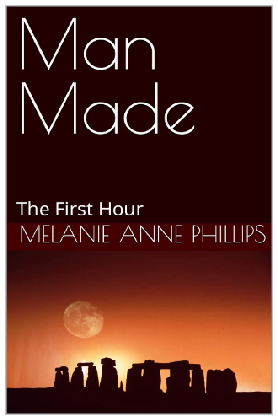Read the Science Fiction Thriller
From the founder of Storymind
Man Made follows a mysterious force as it sweeps around the globe erasing anything man made - from buildings, vehicles, and technology to medicines, clothing, and dental work.
Governments stagger under the panic, religions are at a loss for an explanation, scientists strive for any means to stop or divert the phenomenon, and the world’s population from families to individuals struggle to prepare for The Event, which will drive humanity back beyond the stone age.
The Event is coming.
Are you prepared?
~ Step 27 ~
Thematic Topic
Many authors don't have a theme in mind when the come to a story. They are often more interested in the genre, setting, action, or characters. But without a theme to glue the pieces together, a story seems to meander aimlessly, not covering specific ground but just heading off in any direction.
The theme has two parts:
1. The topic of the story.
2. The moral or message of the story.
The topic is the broad subject area explored, which may be material or conceptual. Death, the complexity of society, nuclear power or man’s inhumanity to man are all potent thematic topics.
In contrast, the moral or message of a story explores an individual human quality such as greed, self-sacrifice, conceit or compassion.
In this step, we’ll locate and refine your thematic topic. Then, in a few more steps, we’ll do the same for your story’s message.
To begin, read through your most recent synopsis with an eye toward any overarching topics addressed in it. If you see one or more unifying topics, list them.
If you don't see an overarching topic already in your story, you are going to need one. Re-read your existing synopsis and look for smaller mentions of topical subject matter that is of personal interest to you as an author or one of your characters, even if it is barely mentioned or exists only between the lines, and put these topics in a list.
Once you have your topic list, write a few words about each: why they interest you, how you feel about them, why you believe they are important.
Now it’s time to select the central topic of your story. You may find that your list contains one particular topic of such great interest to you that the choice is easy.
Or, you may find that none of the topics outshines the rest. If you can’t choose one, consider whether some of your potential topics might actually be sub-categories of one or more of the other topics. If they are, the parent topic would be the one to choose, with the others being part of its exploration.
If you are still baffled, consider the events in your plot and the kinds of characters in your story. Which of the topics in the list are most likely to be covered in the course of your characters engaging in their plot activities?
Choosing the topic your characters and plot will most often touch upon is a good means of coalescing your story around your theme.
When you have selected the principal topic you’d like to address in your story, move on to the next step where we will create specific story instances that illustrate and explore your thematic topic.
~ Step 28 ~
Topic Illustrations
To fully explore a thematic topic, several examples of the topic must appear in your story. For instance, if the topic were Death, then the central example might be the slow demise of a loved one of the Main Character over the course of the story.
Other supporting instances in the same story would be plants withering in the window boxes around town due to a drought, a still-born puppy, or the closing of a family-run business that has been around for over a century.
To begin, list a primary or central example of your thematic topic, either drawn from your synopsis or newly created with a mind to your plot and characters.
Then list as many subordinate examples as readily come to mind. Not to worry if you have trouble coming up with very many. As you continue to develop your story, opportunities to express your thematic topic often suggest themselves.
